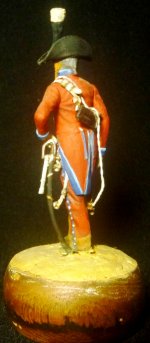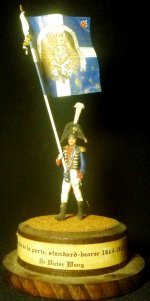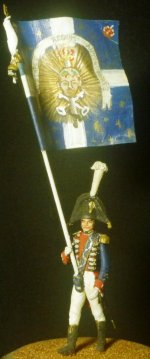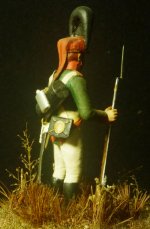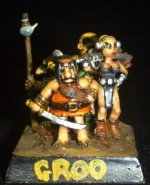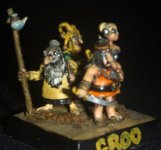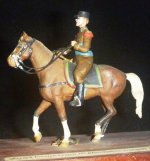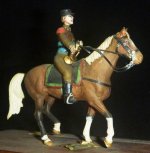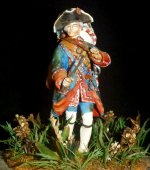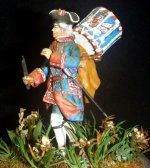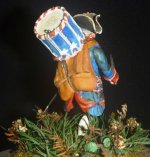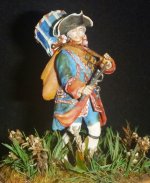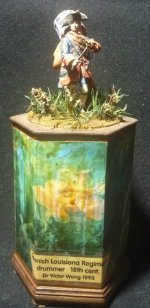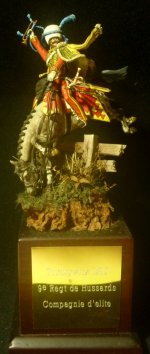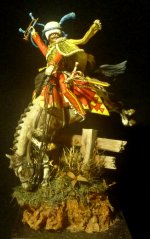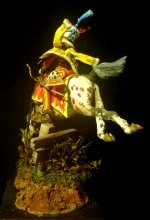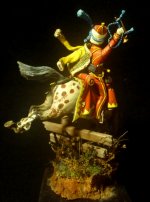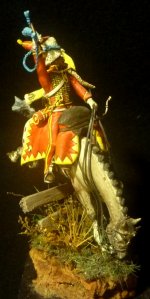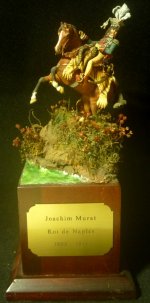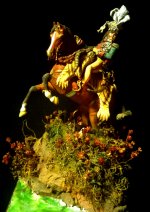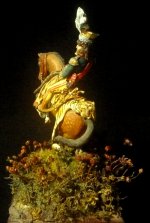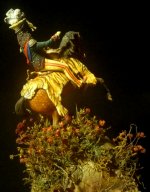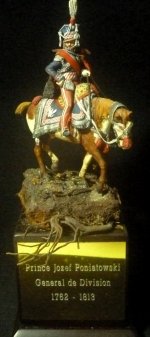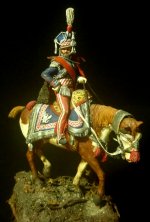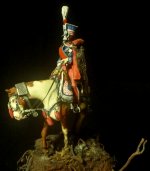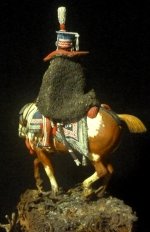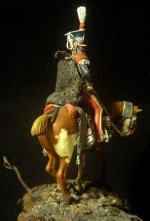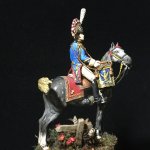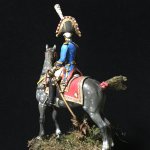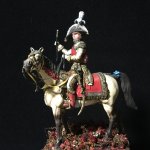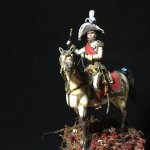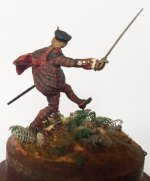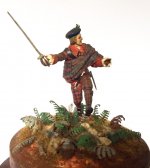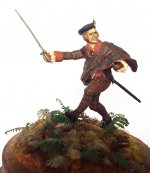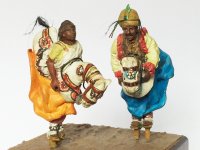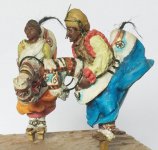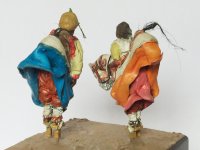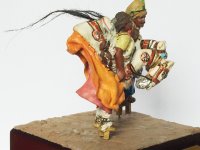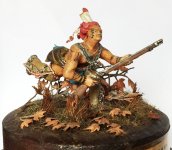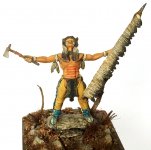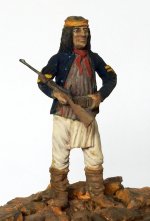You are using an out of date browser. It may not display this or other websites correctly.
You should upgrade or use an alternative browser.
You should upgrade or use an alternative browser.
Blaster Collection (1 Viewer)
- Thread starter blaster
- Start date
blaster
Major
- Joined
- Sep 10, 2008
- Messages
- 6,537
Hello Ray,
Thanks for you kind comments. Your collection is equally diverse!
Following the sculpting without wire armatures, I then decided to be more adventurous and started to sculpt figures with wire armatures. So I selected the American Civil War as the uniforms and equipment were fairly simple. Using only commercial heads, hands and feet, the armatures were posed and the figures were sculpted. Details are kept simple at this stage with Airfix parts used. My main references then came from the Blandford P Kannik's book and P Haythornthwaite's ACW book.
The first figure was a Louisiana Tiger Zouave running through a field. head was Verlinden.
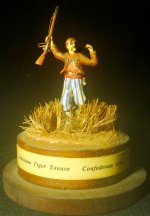
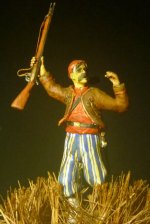
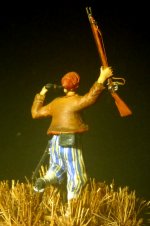
Thanks for you kind comments. Your collection is equally diverse!
Following the sculpting without wire armatures, I then decided to be more adventurous and started to sculpt figures with wire armatures. So I selected the American Civil War as the uniforms and equipment were fairly simple. Using only commercial heads, hands and feet, the armatures were posed and the figures were sculpted. Details are kept simple at this stage with Airfix parts used. My main references then came from the Blandford P Kannik's book and P Haythornthwaite's ACW book.
The first figure was a Louisiana Tiger Zouave running through a field. head was Verlinden.



blaster
Major
- Joined
- Sep 10, 2008
- Messages
- 6,537
The second figure was a US Coloured Troop soldier. This piece was clearly inspired by the movie "Glory" but I only realised that the 54th were state troops whereas the majority of Afro-Americans served as USCT. The trooper is hungry and is scavenging a goat for milk. The goat is a simple toy.
I am now redoing another USCT figure on another thread under "Sculpting" and hopefully, you can see the improved sculpting and details in that figure.

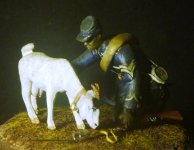
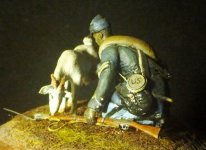
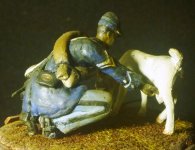
I am now redoing another USCT figure on another thread under "Sculpting" and hopefully, you can see the improved sculpting and details in that figure.




blaster
Major
- Joined
- Sep 10, 2008
- Messages
- 6,537
I also dabbled in converting figures from polythene and polystyrene sources, similar to an old Roy Dilley approach. This British Marine was made as such, with milliput putty. The sun helmet was from the Airfix Afrika Korps set. The base is W Britains. I didn't make many figures like these as the polythene material is not easy to work with. Reference was from a Blandford Book on WWII unifroms.
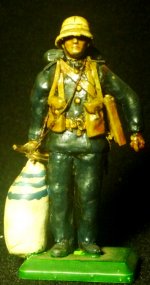
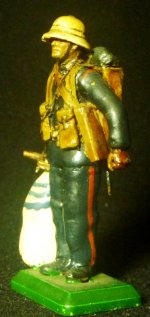
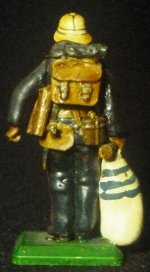



blaster
Major
- Joined
- Sep 10, 2008
- Messages
- 6,537
blaster
Major
- Joined
- Sep 10, 2008
- Messages
- 6,537
This conversion was done with Airfix and Historex parts. The Historex legs were cut down in height. The piece was mounted onto a pencil standcase, covered with pics and glossed over. Most of the varnish has tarnished over time (you heard that here first!). Probably due for a refurbishment too.
Attachments
blaster
Major
- Joined
- Sep 10, 2008
- Messages
- 6,537
I had the chance to visit an old friend the other day. He has a decent size collection with many commercial items. He also had commissioned and or bought some of the early figures that I had made from about 20 years ago, and he kindly agreed to let me take pictures of my figures to post on this thread.
Here is a sampling of these figures, in no specific chronological order.
This figure of General Robert Lee was converted from an early Russian casting (Joy's Toys?) and sitting on a Britains diecast horse.
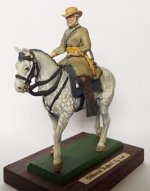
This figure of General Bonaparte in Egypt was made from an old Fonderie Miniature kit. The scale is larger about 60 mm and the metal kit is quite heavy.
Go to Mirof's updated website
http://www.mirofsoft.com/nostalgia-old-catalog-pdf/
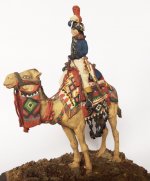
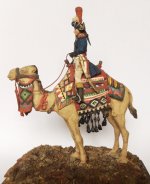
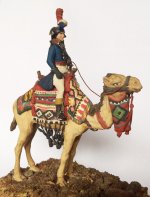
Rgds Victor
Here is a sampling of these figures, in no specific chronological order.
This figure of General Robert Lee was converted from an early Russian casting (Joy's Toys?) and sitting on a Britains diecast horse.

This figure of General Bonaparte in Egypt was made from an old Fonderie Miniature kit. The scale is larger about 60 mm and the metal kit is quite heavy.
Go to Mirof's updated website
http://www.mirofsoft.com/nostalgia-old-catalog-pdf/



Rgds Victor
blaster
Major
- Joined
- Sep 10, 2008
- Messages
- 6,537
I took several pics of this favourite figure of mine. It was once featured in Mil Mod mag many years ago. It is an extensive conversion made from a Scalelink head, Tamiya, Airfix parts and lots of milliput.
Attachments
blaster
Major
- Joined
- Sep 10, 2008
- Messages
- 6,537
I painted this Russian casting of a Spartan hoplite. The shield screen was made from sheet metal.
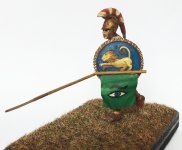
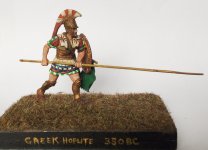
This is an Andrea Roman legionary. The shield design was painted as one found at Dura Europos taken from Peter Connolly's book on Greece and Rome at War. The deer is a Britains figure. The extravagant base was home made. with illustrations taken from magazines.
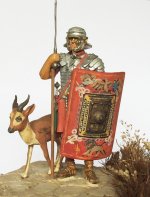
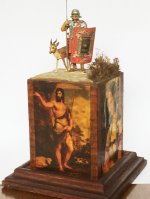


This is an Andrea Roman legionary. The shield design was painted as one found at Dura Europos taken from Peter Connolly's book on Greece and Rome at War. The deer is a Britains figure. The extravagant base was home made. with illustrations taken from magazines.


blaster
Major
- Joined
- Sep 10, 2008
- Messages
- 6,537
Some more ancients.
Andrea Miniatures kit of a Carroballistra with two figures. the roman columns were made from wedding cake decorations.

Roman Imagifier modified with the addition of a bear hood. Tradition figure and the bear was converted from a toy. The milestone was made from putty.
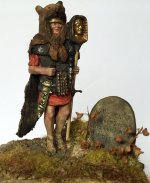
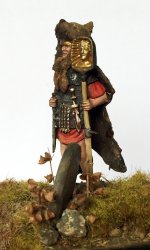
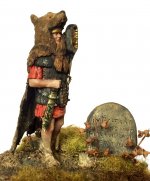
Alexander the Great modified from a Russian Casting. The cloak was sculpted from putty.
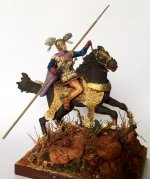
Andrea Miniatures kit of a Carroballistra with two figures. the roman columns were made from wedding cake decorations.

Roman Imagifier modified with the addition of a bear hood. Tradition figure and the bear was converted from a toy. The milestone was made from putty.



Alexander the Great modified from a Russian Casting. The cloak was sculpted from putty.

Users who are viewing this thread
Total: 2 (members: 0, guests: 2)



